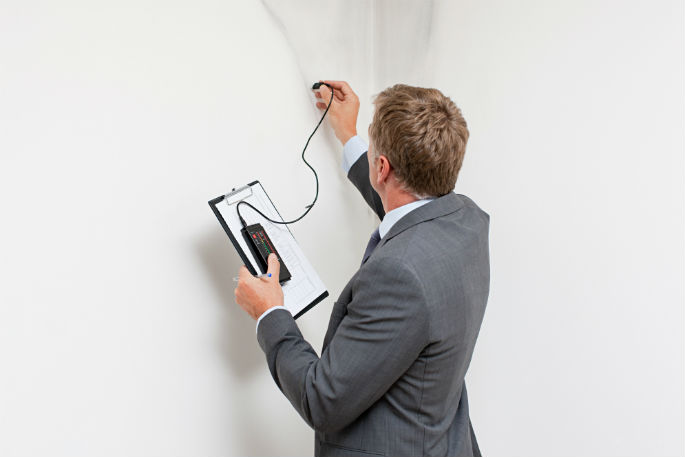A woman has questioned the point of a building inspection after she purchased a leaky residential property in Katikati.
The woman, who wishes to remain anonymous, was devastated when she discovered her new home had water spilling through the ceiling in the lounge after a downpour just a week after she had bought the house.
'I was sitting there looking at the rain thinking ‘this is nice for a change'. Then I realised the rain was actually inside the ranch slider and it was pouring all over the carpet,” she says.
Before buying the property, a building inspection was required by the bank. She says she was recommended a building inspection company by her mortgage broker and the company conducted a $550 report on the property.
'I only had a certain amount of time to get the building report because another offer had come in on the house, so I had to organise something pretty quickly,” she explains.
'It was a pretty full-on report, but after everything they pointed out they then said things to get themselves out of being responsible for future damages.”
In the 20-page building inspection it says on the day of the inspection, there were no overflows evident to the interior guttering of the dwelling, however there was signs of leaking.
The report says: 'Due to the dry conditions on the day of our inspection, I cannot generally comment on any leaks that may be evident to the guttering or downpipes, however, the gutter is definitely leaking where the soffit linings have been damaged and the algae growth on the bricks near the downpipe penetration through the soffit on the southeast corner of the dining area suggests the downpipe may be leaking within the soffit.
'Further investigation will be required to determine this, however, the gutter and downpipes generally require a closer assessment.”
Further down in the report, it also states moisture testing was conducted. However, the non-invasive Wagner 210 hand held moisture meter is only reliable for up to 30 mm through a wall.
'Hand held non-invasive moisture meter readings taken to the interior of this dwelling on the day of our inspection were regarded as being within ‘normal tolerances',” says the report.
The woman says she understands some circumstances can't be foreseen on a fine day, but this water damage was very noticeable.
'I feel a bit ripped off,” she says. 'I know they don't have a crystal ball and can't foretell the future, and I do understand where they say this could be a completely different outcome on a rainy day.
'But at the same time I've had a roofer and a plumber come around and they both said ‘how could they have missed that?' They said it was obvious and that there's so many tell-tale signs that it's been happening for a while.”
There is a standard for property inspections, however, Ministry of Business, Innovation and Employment say compliance is not mandatory.
The voluntary residential property inspection (NZS 4306:2005) was published in 2005 in response to events in the building industry relating to weather tightness and durability, and concerns that many property inspections were not picking up important defects.
The residential property inspection standard covers a range of issues concerning pre-purchase property.
The inspection should include an assessment of the condition of each of the following areas, where safe, unobstructed access is provided: Site, subfloor, exterior, roof exterior, roof space, interior, services and identified ancillary spaces and buildings.
It shall be clearly stated in a property report if no access was available, or access to limited areas only was available at the time the inspection was carried out.
Inspectors should be assessing gradual deterioration, maintenance issues, trade specific testing and attributes, such as plumbing, gas, electrical, insulation, double glazing, and plumbing issues, and construction defects including structural, instability, weather tightness, durability and workmanship.
The Ministry of Business, Innovation and Employment recommend that homeowners insist that a property inspection is carried out according to the residential property inspection standard and that the inspector is willing to certify this in writing.
'If a homeowner is unhappy with the quality of a building inspection, the first step should be to try and resolve the issues with the building inspector,” says a MBIE spokesperson.
'If you are not able to reach a satisfactory solution, contact the membership organisation the inspector belongs to, as they often have a code of practice in place.”
The Building Performance website: www.building.govt.nz provides a checklist for buyers wishing to make informed decisions when buying a house.



0 comments
Leave a Comment
You must be logged in to make a comment.